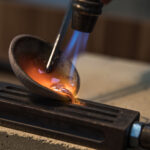Polyurethane Hot Melt is a type of adhesive that is commonly used in a variety of industrial and manufacturing applications. It is a thermoplastic material that is made by combining polyurethane resins with a Hot Melt adhesive.
Polyurethane Hot Melt adhesives are known for their high strength, durability, and resistance to chemicals, solvents, and moisture. They are also known for their ability to bond to a wide range of substrates, including plastics, metals, and wood.
Polyurethane Hot Melt adhesives are applied in a molten state and then solidify as they cool, creating a strong bond between the two substrates. They can be used in a variety of manufacturing processes, including packaging, woodworking, and automotive assembly.
Overall, polyurethane Hot Melt adhesives are a versatile and reliable choice for bonding a wide range of materials in industrial and manufacturing settings.




